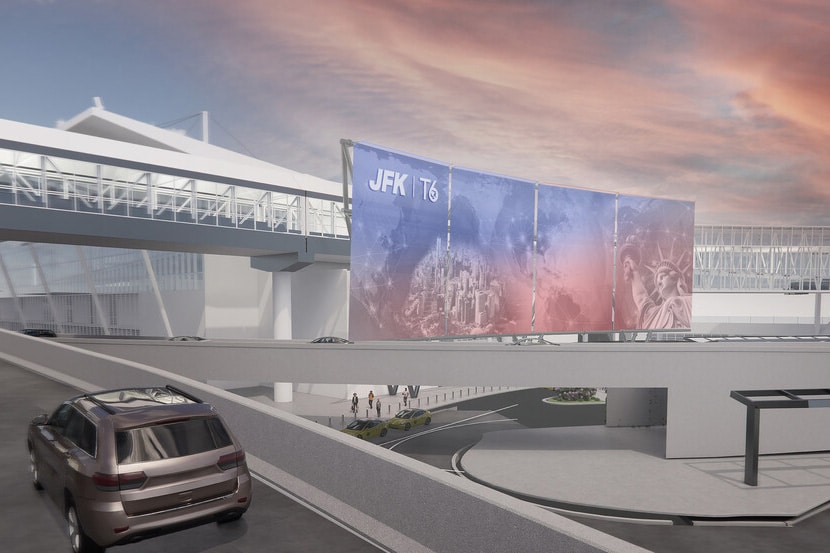Shaping the Future of Airports and the Aviation Industry

The aviation industry is experiencing unprecedented transformation, driven by rapid technological advances, evolving traveler expectations, and sustainability imperatives. Airports are shifting from traditional transit points to multifunctional hubs that seamlessly integrate innovation, efficiency, and enhanced guest experiences.
We’ll examine key trends shaping the future of airports and aviation, focusing on five areas:
- Sustainability
- Technology
- Guest Experiences
- Accessibility
- Stakeholder Collaboration
Setting the stage for this transformation, the aviation sector is on a remarkable recovery trajectory. According to the International Air Transport Association, global passenger traffic in 2024 surged to a record 9.5 billion, underscoring the need for airports to adapt to evolving industry dynamics to remain competitive.
The Global Aviation Industry Landscape and Outlook
The aviation industry’s post-COVID recovery is reshaping airports worldwide, creating opportunities for innovation while highlighting capacity and operational challenges. Airport innovation and advancements in technology are crucial to meeting growing travel demand and redefining the future of airports.
From airline industry trends to the need for more sustainable and efficient operations, airports are adapting to a landscape marked by fluctuating passenger volumes and evolving regulatory frameworks. Let’s explore how airports are tackling these challenges.
Demand and Capacity Challenges
As passenger numbers rise, airports are grappling with capacity limitations that challenge their ability to deliver seamless travel experiences. Airports are responding to these challenges in innovative ways:
- Expanding terminal facilities and adding gates to accommodate increased traffic.
- Implementing biometric technology to reduce check-in and boarding wait times.
- Deploying AI-powered traffic forecasting tools to optimize resource allocation.
- Introducing off-site check-in and baggage drop-off services to ease congestion.
In Cyprus, Vantage’s network airports operated by Hermes Airports have announced a major investment exceeding €170 million to expand and upgrade both Larnaka and Pafos Airports as part of Phase 2 development works. This initiative is designed to significantly increase airport capacity and enhance the overall guest experience, ensuring the infrastructure can meet future demand well beyond the current agreement period. At Larnaka Airport, the expansion will cover approximately 20,000 square meters (215,280 square feet), including the construction of a new annex with departure and arrival gates, additional baggage claim belts, new passport control and security clearance areas, expanded commercial zones, and increased aircraft parking spaces. These upgrades will help the airport accommodate forecasted growth in passenger traffic through 2040, increasing capacity to 12.4 million passengers. Meanwhile, Pafos Airport will enable up to a 30% increase in terminal capacity, improvements in passenger processing efficiency, and an extension of the southern parallel taxiway to boost operational flexibility. The construction is expected to be completed within 30 months at Larnaka and 27 months at Pafos, marking a significant step forward in Cyprus’s aviation infrastructure development.
Navigating Airport Regulatory Changes
Geopolitical shifts and changing regulations are creating complex settings for airports. These changes demand flexibility and the ability to balance local and international compliance standards.
By embracing collaborative approaches, airports can:
- Align with global security and safety requirements, such as those set by ICAO.
- Ensure compliance with local environmental laws and emissions targets.
- Adapt to new international health protocols to enhance passenger safety and confidence.
Sustainability in Airports
The aviation sector is moving beyond mere regulatory compliance, with airports taking proactive leadership in sustainability initiatives. By integrating renewable energy sources and green technology, airports are setting benchmarks for environmentally conscious operations while delivering long-term economic and environmental benefits.
Renewable Energy Adoption in Airports
Leading airports are embracing renewable energy to reduce their carbon footprint and operational costs. Notable mentions include:
- Installing solar components to an existing power grid.
- Utilizing wind turbines in areas with high wind potential.
- Exploring geothermal energy systems for heating and cooling terminals.
- Adopting energy storage technologies to enhance grid independence.
These initiatives not only reduce reliance on fossil fuels but also position airports as global leaders in sustainable innovation.
Naturally, some destinations are better suited to harness solar energy than others — making it all the more important for those with the potential to lead the way. Airports within the Vantage network – Cyprus and Jamaica – have taken significant steps to expand their solar energy capabilities. In 2024, the teams at Pafos and Larnaka Airports initiated plans to increase their solar capacity by over two megawatts, enabling Larnaka to meet 40% of its total energy needs through solar power. Additionally, both airports upgraded to LED floodlights on two aprons, improving visibility while cutting energy consumption by 50-60%. Meanwhile, at the Montego Bay Airport, the solar output was expanded to three megawatts, covering 33% of the facility’s energy requirements. By the end of 2025, the team aims to double that output, generating over 60% of the airport’s energy from solar sources.

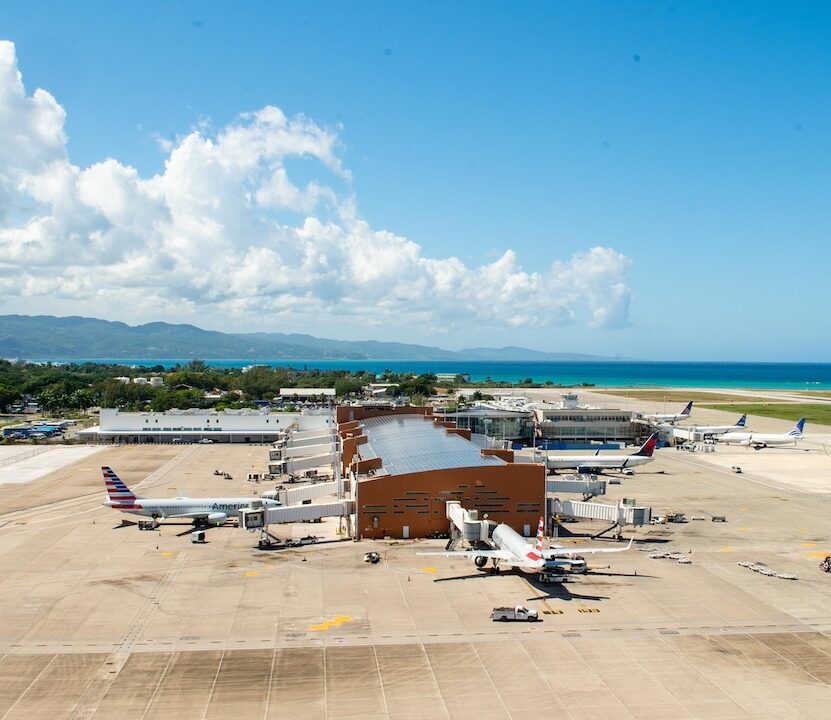
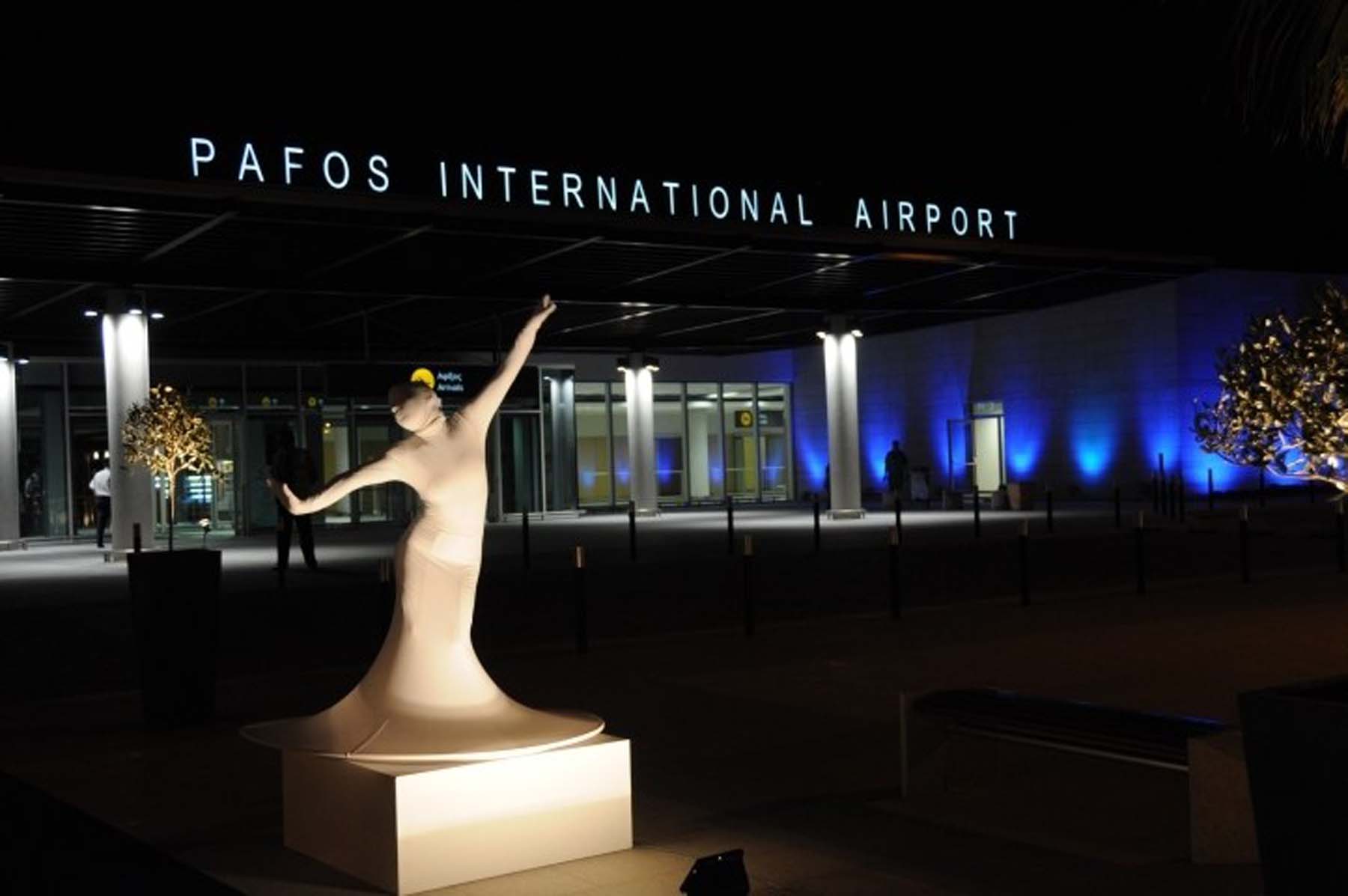
Enhancing the Guest Experience in Airports
Today’s travelers expect more than efficiency. They want comfort, convenience, and personalized services. Airports are embracing guest-centric innovations, blending technology with thoughtful design for memorable experiences that reflect ever-evolving guest expectations.
Personalization of Services for Different Traveler Profiles
Airports are reshaping the passenger journey by tailoring services to meet the diverse expectations of travelers. By leveraging data insights and feedback, they are redefining airport experiences for various traveler demographics, including:
- Families – Child-friendly lounges with play areas, family check-in counters, and stroller rental services.
- Business Travelers – Premium lounges offering quiet workspaces, fast Wi-Fi, and meeting rooms.
- Leisure Guests – Personalized retail solutions, curated dining experiences, and immersive entertainment options, such as virtual reality booths.
Creating experiences that suit all travelers means understanding who is traveling through the airport. At Kansas City International Airport, Vantage has partnered with Escape Lounges by Cavu. Opened in April 2025, the new pay-per-visit airport lounge offers every traveler an escape by providing unique zones that cater to a range of different experiences, including quiet areas, family gathering spaces, and a statement dining zone for guests to enjoy an array of curated dishes from the Escape Lounges culinary team. Of course, it takes more than one amenity to satisfy a range of experiences; the entire airport concessions program is locally inspired, well-rounded, and caters to a range of guest needs.
Airports for Everyone
Accessibility for all travelers is no longer a secondary consideration; it’s a fundamental principle in the design and operation of modern airports. By prioritizing accessibility and universal design, airports ensure a welcoming, pleasant experience for all travelers, regardless of age, ability, or background.
Airport Accessibility: Redefining Travel for Everyone
Modern airports are setting new standards for accessibility by incorporating innovative services and infrastructure to accommodate travelers with disabilities. Advancements include:
- Mobility aids such as electric scooters, wheelchairs, and accessible shuttles.
- Sensory-friendly spaces, such as quiet rooms for neurodiverse individuals.
- Visual and auditory aids, including braille signage and real-time flight updates via accessible apps.
These measures ensure that airports are not only compliant with accessibility laws but also exceed expectations for inclusive airport services.
Vantage works closely with the Rick Hansen Foundation (RHF), whose mission is to create a barrier-free world, with initiatives that include accessibility certifications and awareness training. Together, we work to make sure that our airports offer enhanced accessibility through every touchpoint from elevators and wayfinding to staff training and technology implementation. In 2024, an assessment was completed at Lynden Pindling International Airport in Nassau, The Bahamas, the first step toward certification. Elsewhere across the network, LaGuardia Terminal B, John C. Munro Hamilton International Airport, and Greater Moncton Roméo LeBlanc International Airport are also certified by RHF.
At LaGuardia Terminal B, a few examples of accessible design include:
- A curbside guest services desk, which is equipped with wheelchair call buttons and tactile indicators.
- Participation in the Hidden Disabilities Sunflower Program.
- ADA-compliant family restrooms.
- Calming park areas in concourses.
- Dedicated TSA security screening for passengers using wheelchairs.
Universal Design Principles
Universal design transforms airports into spaces that are accessible and comfortable for everyone, regardless of physical or cognitive ability. Key features include:
- Wide, step-free pathways to accommodate wheelchairs, strollers, and luggage carts.
- Intuitive wayfinding systems with clear signage, tactile paths, and multilingual displays.
- Elevators, escalators, and ramps positioned for optimal accessibility.
- Ergonomic seating with options for back support and charging ports.
- Restrooms and service counters designed for easy access by all, including those with mobility aids.
By integrating thoughtful design features, airports set the standard for creating spaces that serve all travelers – because when thousands pass through daily, every design decision matters. At LaGuardia’s Terminal B, Vantage explored a dozen check-in layouts using detailed simulations and fly-through videos to visualize the passenger journey. These virtual tours helped narrow the options before full-scale mock-ups were tested on-site to simulate real-world use.
At JFK’s Terminal 6, now under construction, a working prototype restroom is being used to gather real-time feedback and refine the design based on actual passenger behavior. Sometimes digital models suffice; other times, physically experiencing the space reveals what drawings can’t.
Mock-up rooms offer a critical testing ground. They allow stakeholders – from airline partners to contractors – to walk through the space and evaluate the guest experience firsthand. Do wheeled bags snag on the carpet? Are the sinks too low? Do the tiles echo too much? These are questions only real-world testing can answer.
Accommodating Various Traveler Profiles
Airports are also tailoring services to meet the needs of specific groups, to ensure everyone feels valued and cared for. Services include:
- Family-friendly play zones, priority security lanes, and nursing rooms.
- Concierge assistance, easily accessible rest areas, and mobility aid services.
- Pre-travel airport familiarization programs, sensory-friendly check-in areas, and trained staff to assist neurodiverse travelers.
Many airports in the Vantage network offer programs designed to support travelers with specialized needs. One such initiative is the Hidden Disabilities Sunflower Program, which helps passengers with non-visible disabilities feel more supported during their journey. This program is available at several Vantage network airports, including Hamilton, Kamloops, LaGuardia Terminal B, Larnaka and Pafos, Moncton, North Peace, and Nassau.
In 2023, the team in Nassau expanded accessibility efforts by partnering with the Garvin Tynes School Autism Unit to launch the “I Can Fly” program at Lynden Pindling International Airport. Since 2024, this initiative has enabled over 130 children on the autism spectrum – and their families – to experience the air travel process in a low-stress, simulated environment.
The program not only helps families prepare for air travel but also educates airport staff on how to better support neurodiverse passengers. To further enhance the experience, the airport developed an illustrated digital storybook that guides children through each step of the airport journey in a fun and engaging way.
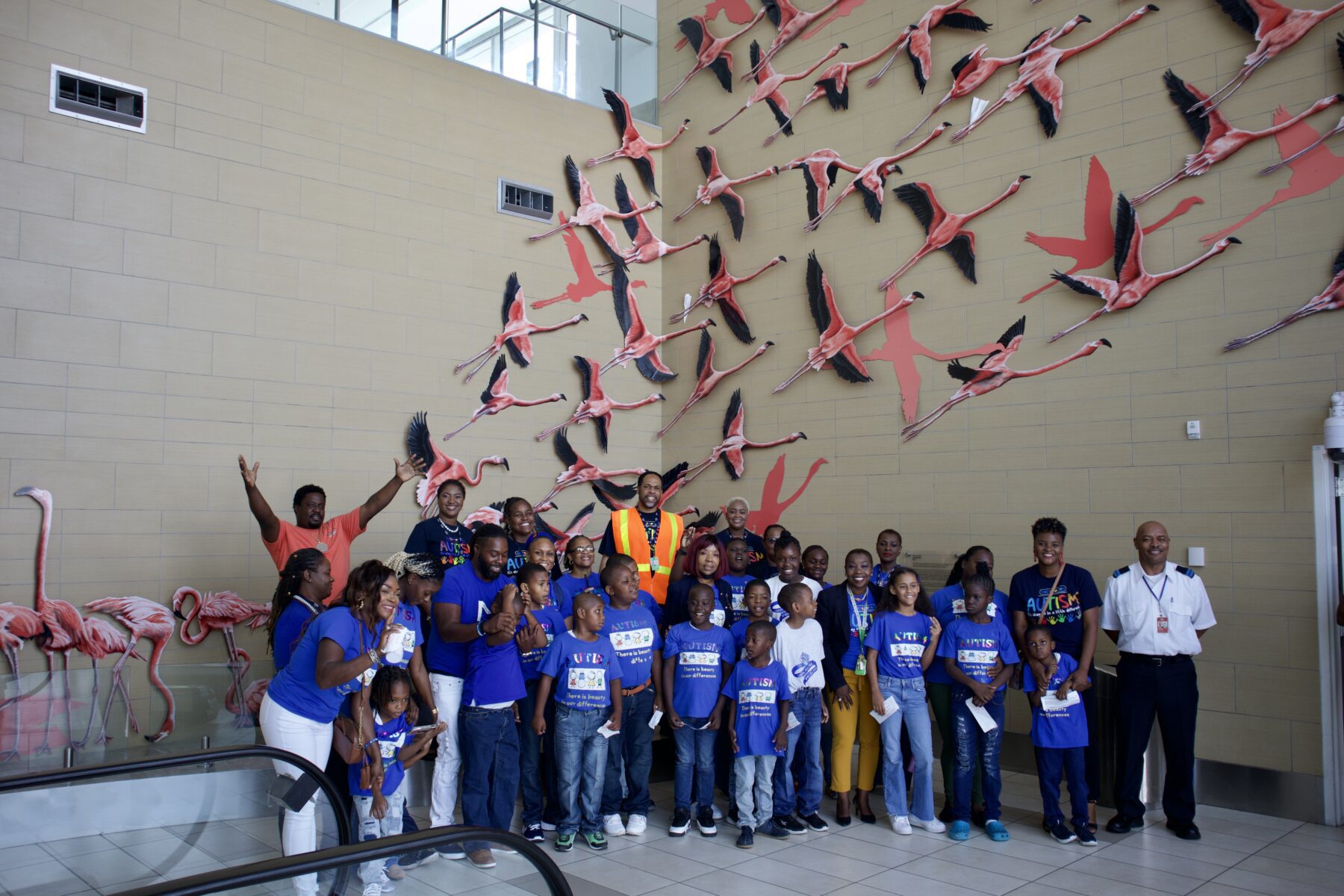


The Role of Technology in Airports
Technology is revolutionizing the aviation industry, reshaping airport operations and transforming the guest experience. From AI-driven systems to cutting-edge biometric security, airport innovation is paving the way for safer, more efficient, and personalized air travel experiences.
Biometric Technology in Security
Biometric technology is streamlining passenger processing and enhancing security measures at airports:
- Facial recognition systems speed up check-in, security, and boarding processes.
- Biometric-enabled kiosks ensure identity verification with minimal human intervention.
- Contactless solutions improve hygiene and reduce wait times, boosting passenger satisfaction.
At the new JFK Terminal 6, JFK Millenium Partners, the Vantage-led developer of T6, will set a new standard in airport security by partnering with K2 Security Screening Group to implement a cutting-edge checkpoint featuring biometric identity verification, 3D CT X-ray imaging, and automated screening systems. This innovative approach will streamline passenger flow, reduce wait times, and enhance security through technologies like Credential Authentication Technology 2 (CAT2), which matches real-time photos with ID credentials – eliminating the need for boarding passes at security.
AI-Powered Operations
Artificial Intelligence (AI) is playing a critical role in optimizing airport operations and can be found in these areas:
- Resource management – AI predicts peak times, to allocate staff and equipment.
- Predictive maintenance – AI detects equipment issues early, reducing downtime and costs.
- Passenger flow optimization – AI analyzes traffic patterns to minimize congestion in terminals.
Innovation doesn’t happen by chance — it’s the result of bold ideas, strategic investment, and the right opportunities brought to life through practical application. To drive continuous innovation in aviation and transportation infrastructure, Vantage has launched Vantage Futures, a corporate venture initiative designed to shape the future of the industry.
Among the first investments in the Vantage Futures portfolio is Azalea Robotics, a pioneering startup tackling one of aviation’s persistent challenges: baggage logistics. By leveraging AI-powered autonomous systems, Azalea aims to streamline baggage handling, minimize mishandled luggage, and significantly boost operational efficiency across airport operations.
An additional use of AI-powered efficiencies can be found in a more unassuming setting. At LaGuardia Airport Terminal B, “Oscar” – an AI-powered waste bin from Intuitive AI – helps travelers sort trash and recycling more accurately. Using a camera and AI software, Oscar instantly identifies items and tells users where to dispose of them, reducing confusion and improving recycling habits. The system also offers gamified incentives via QR codes and provides valuable data to improve waste management. In just three months, Oscar bins saw around 1,000 daily interactions and achieved a 47% diversion rate — nearly double that of traditional bins.
Smart Retail and F&B Services
Airports are integrating technology to enhance retail and dining experiences:
- App-based ordering for food and beverages, eliminating long waits.
- Self-checkout kiosks for faster, seamless transactions.
- AI-powered systems offer personalized product and dining recommendations based on traveler preferences.
Immersive Digital Experiences
Airports are using Augmented Reality (AR) and Virtual Reality (VR) to create engaging digital experiences:
- AR wayfinding apps help travelers navigate terminals.
- VR entertainment zones allow passengers to enjoy immersive games or travel experiences before their flight.
- Retailers are leveraging AR to let customers “try before they buy.”
Integrating digital and contactless technologies can also enhance convenience as well as address labor shortages and operational efficiencies. Airports like Kansas City International (MCI) and Chicago Midway International Airport (MDW) have embraced Amazon’s Just Walk Out technology, self-checkout stations, and mobile ordering platforms to streamline the purchase experience.
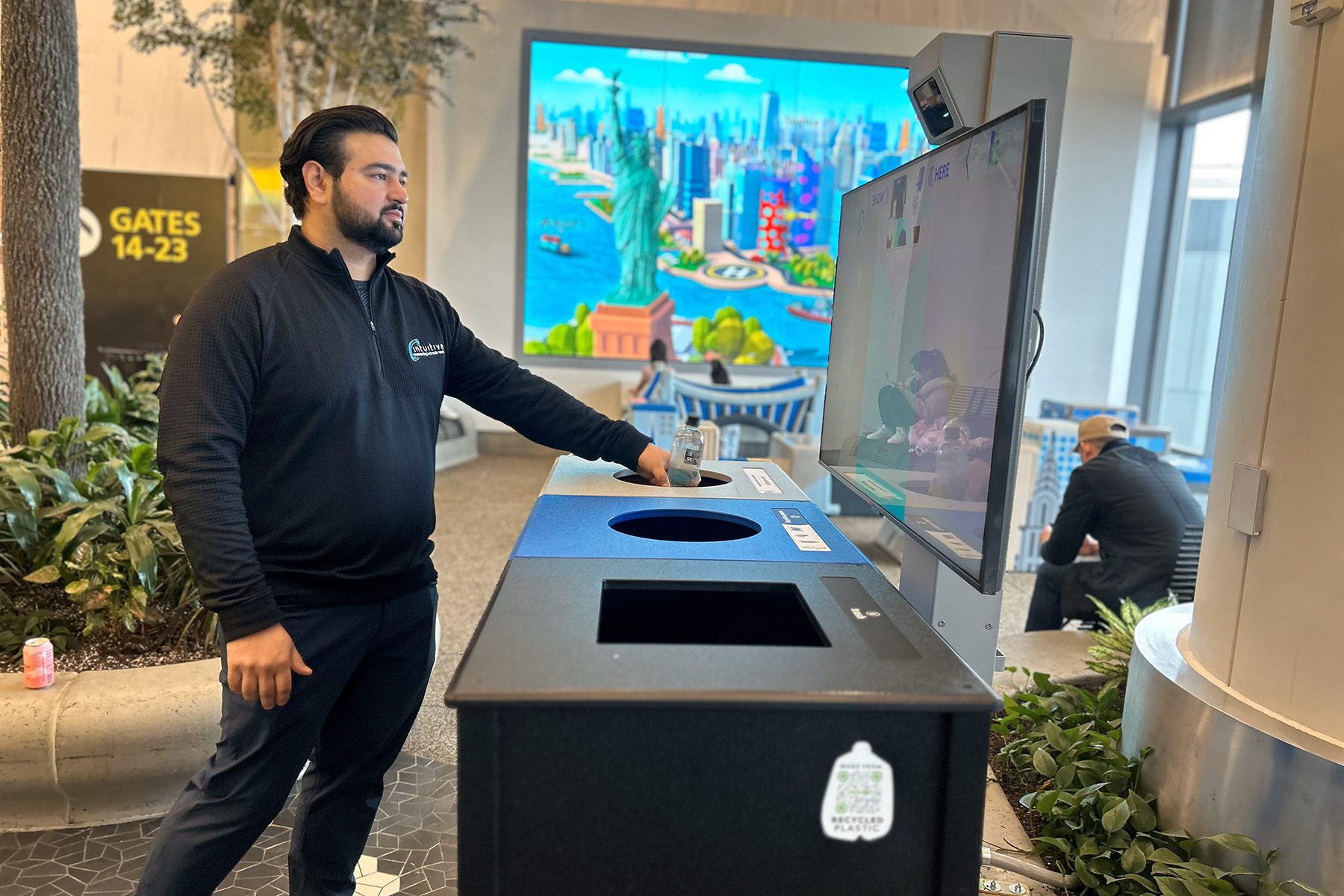
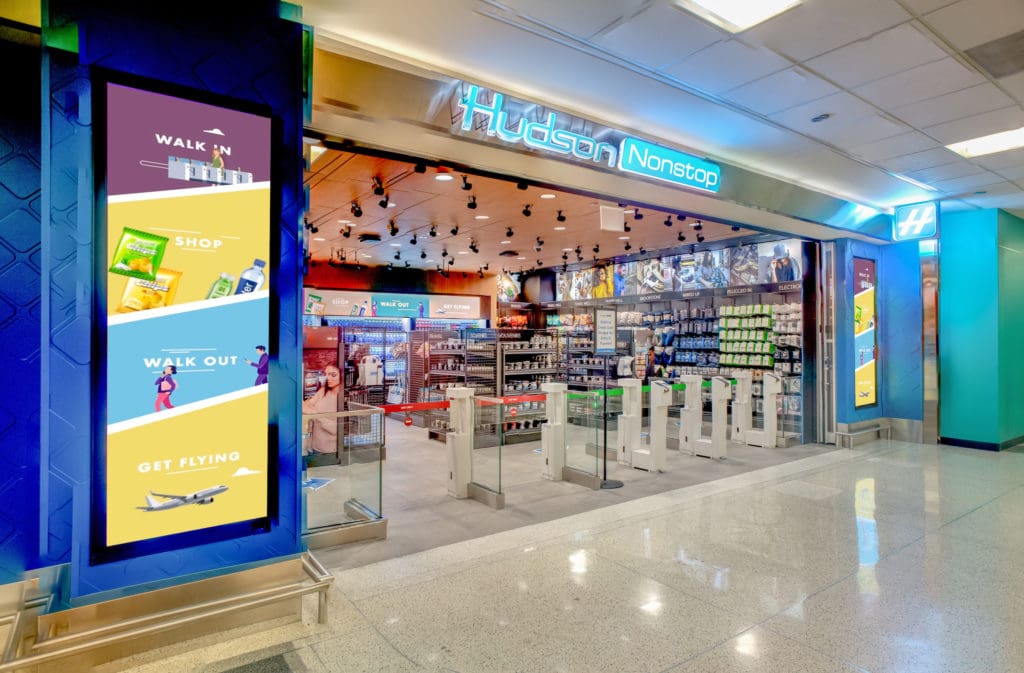
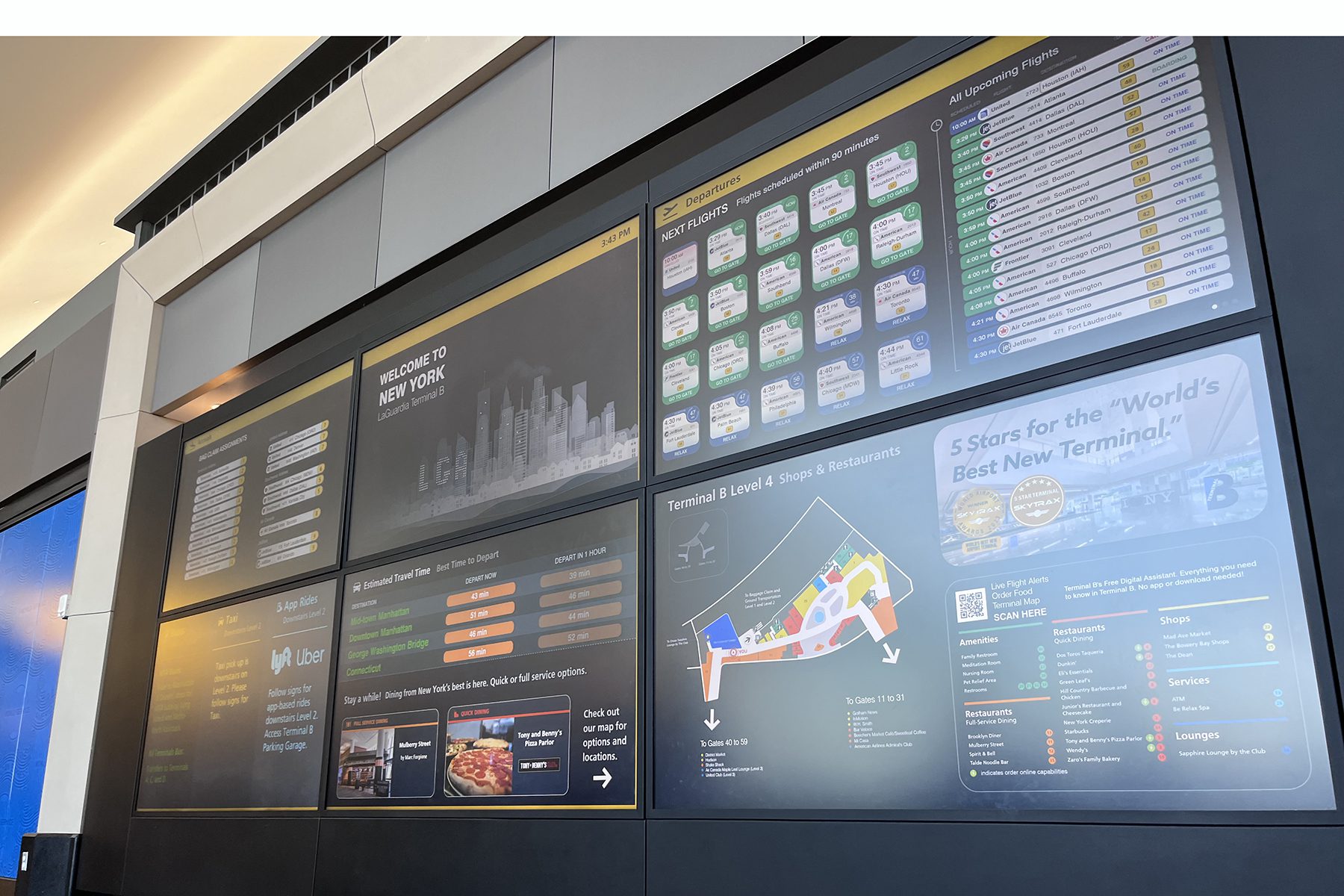
Stakeholder and Partnership Management
Collaboration among diverse stakeholders is essential to the success of modern airports. Airports must navigate intricate relationships with airlines, governments, private investors, and regulators to align goals, secure funding, and drive progress.
Balancing Interests Across Stakeholders
Airports must align the goals of multiple stakeholders to ensure smooth operations and innovation. Effective strategies include:
- Establishing collaborative committees to encourage dialogue between airlines, operators, and regulators.
- Creating data-sharing platforms to promote transparency.
In today’s aviation industry, the economic goals of key stakeholders don’t always align. Airports – often owned by municipalities or public entities — serve as vital public assets, accountable to the communities they support. Their mission is to attract travelers, airlines, and commercial partners by investing in modern, appealing infrastructure. Airlines, by contrast, are private enterprises focused on building efficient, profitable routes while managing costs and delivering value to customers, employees, and shareholders. These differing mandates can sometimes lead to conflicting priorities.
That’s where Vantage comes in. We specialize in bridging these gaps, aligning the interests of airports and airlines to create partnerships that are both productive and enduring. We take the time to understand each partner’s unique needs and goals — and then strive to exceed them. Our long-term commitments reflect this approach: from our 30-year management agreement at LaGuardia Terminal B, to the extension of our Kamloops Airport lease through 2062, and a new 49-year lease at John C. Munro Hamilton International Airport. But these agreements are more than just signatures — they’re backed by tangible investments and shared success. In Hamilton, for example, we’ve made significant terminal upgrades and launched a strategic partnership with Porter Airlines to expand service, enhance the guest experience, and drive regional economic growth.
With strong relationships with airlines across the globe, Vantage is well-positioned to deliver world-class results. At our upcoming $4.2 billion JFK Terminal 6 – set to open its first gates in 2026 – we’re excited to welcome a diverse group of international carriers, including Aer Lingus, Air Canada, ANA, Austrian, Brussels Airlines, Cathay, Condor, Frontier Airlines, JetBlue, Kuwait Airways, Lufthansa, Norse, and Swiss, with more to come. We’re working closely with each airline to ensure the terminal delivers exceptional operational efficiency and an outstanding guest experience.
Forging the Future of Airports Together
The aviation industry is at an incredible point, requiring bold innovation and unified efforts to meet the challenges of tomorrow. Airports must embrace cutting-edge technologies, sustainable practices, and inclusive designs to stay competitive and elevate the guest experience.
Ready to take action, to work together to shape the future of airports and redefine the aviation industry for generations to come? Contact us today to learn more.
Resource Hub
Discover How Vantage Elevates Transportation Experiences
At Vantage, we’re launching innovative airport redesign projects and reimagining the future of transportation. See More in Our Resource Hub
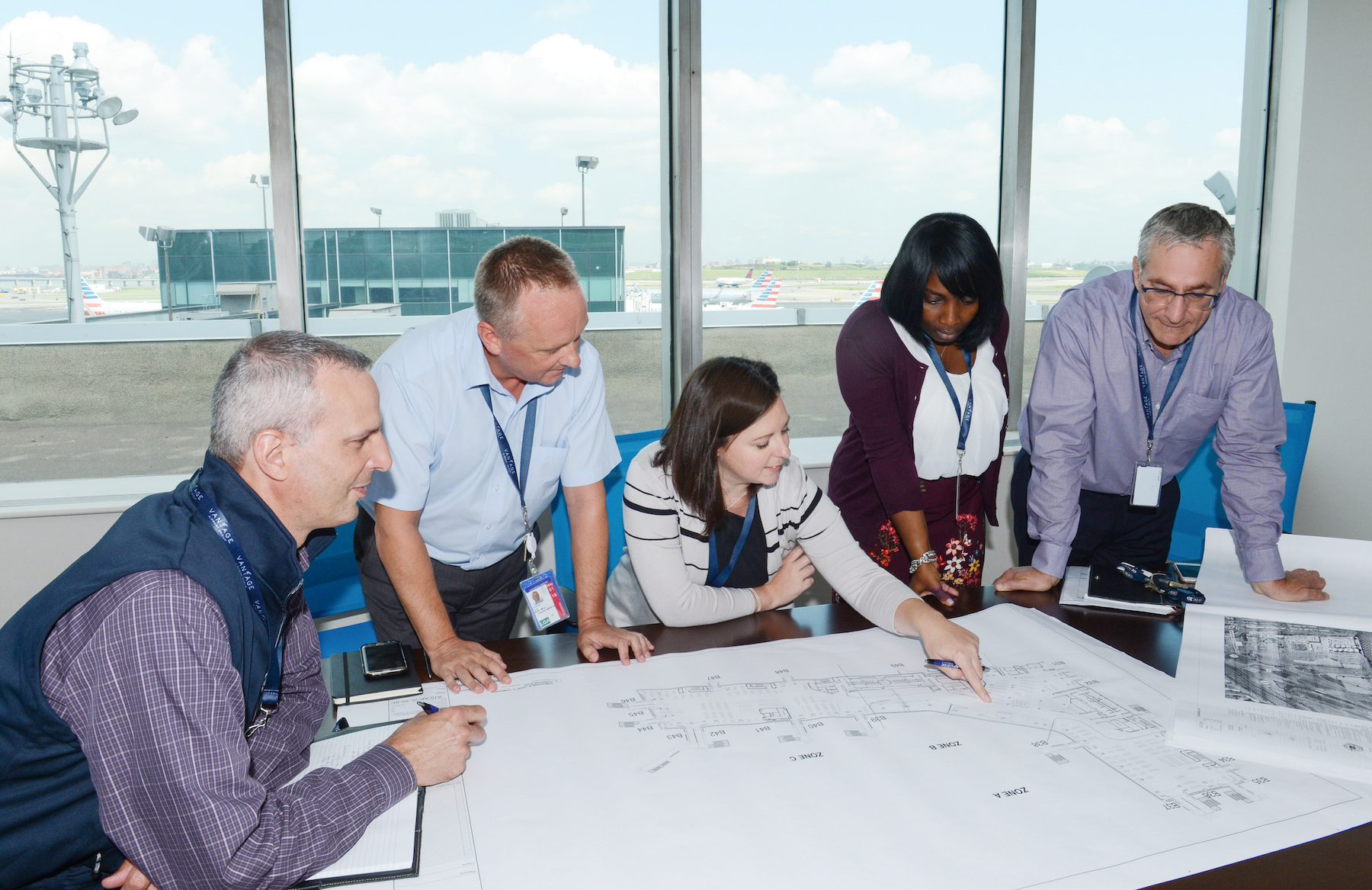
Transforming Transportation, Together
Let’s partner to bring your ideas to life, building sustainable, connected airports and transportation centers together.
